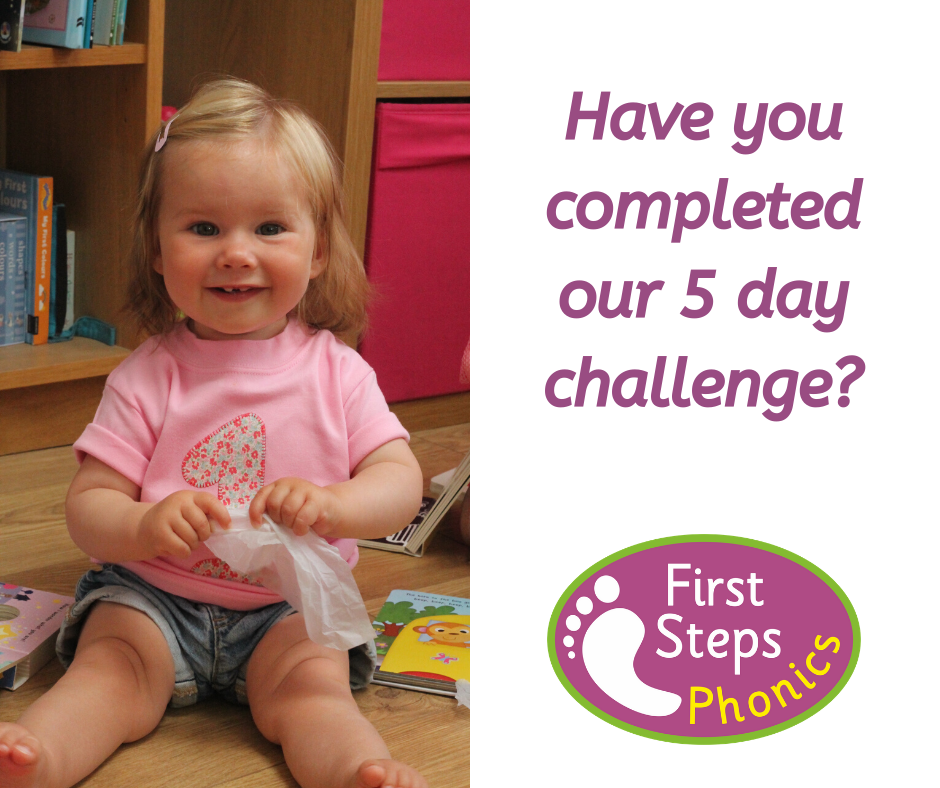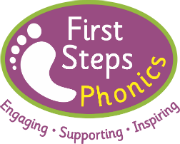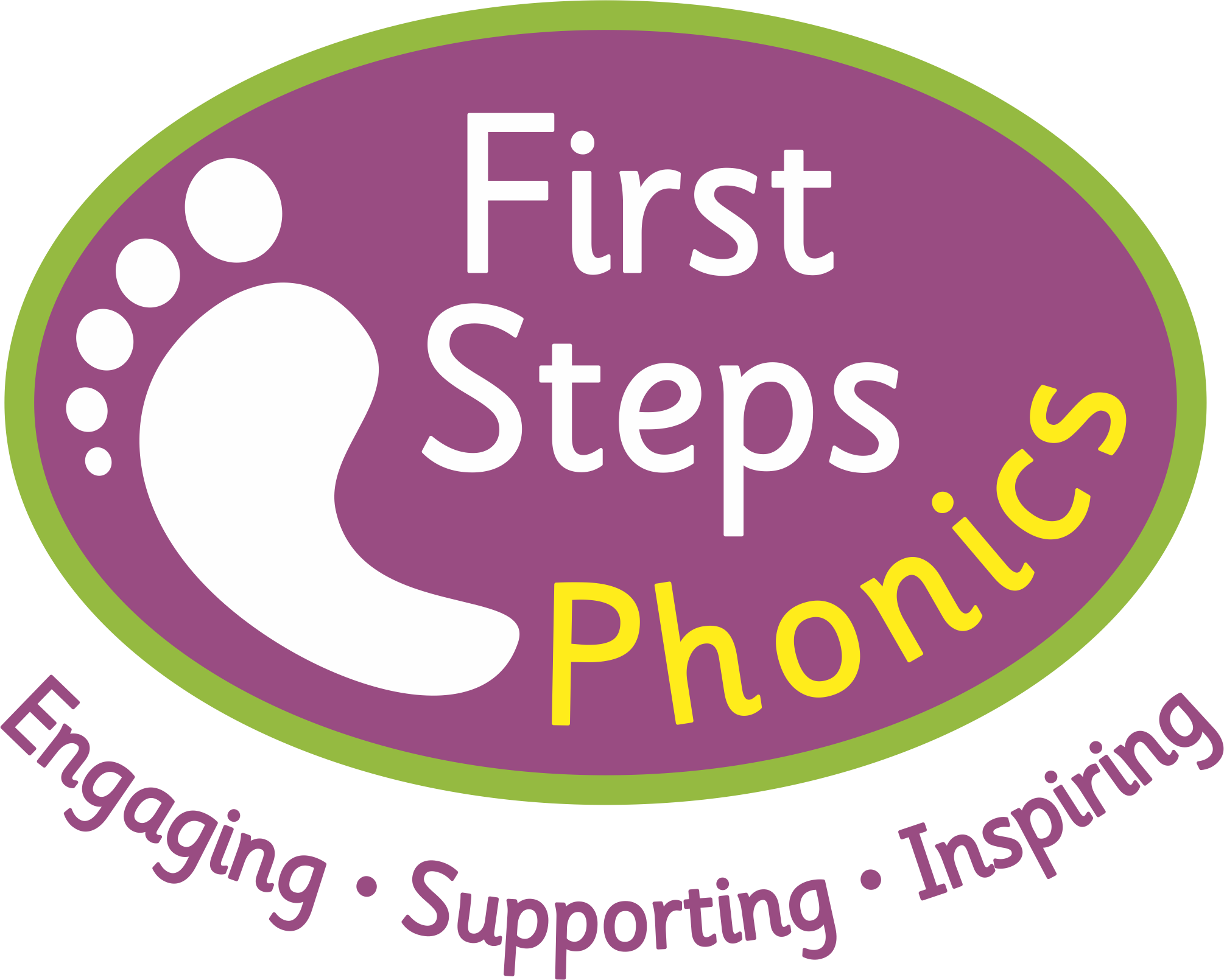
Our online First Steps Phonics sessions help your child to learn as they play. Why not try our 5 day challenge using the links below?
Each day, we will introduce you to a selection of simple activities that you can use at home with with your child, keeping them entertained whilst also helping to develop key skills for school. Each session is developed and delivered by an experienced Early Years teacher with over 10 years’ experience. Through doing the sessions you will also learn about Phonics, the technique that schools use to teach reading.
For the next 5 days, complete the 5 sessions below to discover the sound ‘j’. We hope that through doing our daily sessions, you will have fun with your child and you will both be better prepared for school.
If you would like to book to receive next week’s sessions, click here!

Today’s video ‘What’s in the Bag?’ introduces your child to the sound ‘j’. Throughout today’s activities, your child will be encouraged to listen to, and use, the sound “j”.
- Encourage your child to guess the answers as they watch the video
- Can your child say the name of each object?
- Can your child say the sound ‘j’?
- If your child is older, try to help them sound out the words using blending e.g. “j-e-t, jet”
Follow up activity:
- Go on a treasure hunt around your home, searching for objects that begin with the letter “j”.
- With younger children, ask them to pick up a specific object e.g. “where is the jumper”
- Try giving action-based instructions e.g. “shake the jumper”
- Put the objects in a box or bag. Sing the song ‘what’s in the bag’ and encourage your child to pull each object out. Can they name the object?
- Play hide and seek: hide three of the objects around the room and challenge your child to find them. You could give clues to help them
- If your child is older, try sounding out the words e.g. “j-a-m”. Can they pick up the object that you are naming?
Click here to learn more about Phonics, the technique used by schools to teach children to read.

Today’s video ‘Jumping Jacks’ encourages your child to explore the different ways that they can move their body, whilst also helping them to develop their skills at listening to, and following, instructions. The video also encourages children to practise blending sounds to read words e.g. “j-u-m-p, jump.”
- Encourage your child to copy the movements as they watch the video
- Can your child follow the instruction before the robot starts doing it?
- Ask your child if they can guess the word that the robot is blending
Follow up activity:
- Spend some time exploring the different ways that your child can move.
- Can they do big jumps?
- Can they do small jumps?
- Can they do star jumps?
- Can they jump from side to side?
- Can they jump forwards and backwards?
- Can they jog on the spot slowly?
- Can they jog on the spot quickly?
- Can they show you their jazz hands?
- Can they freeze?
- How many other ways can they find to move?
- Which way is their favourite?
- Which of the movements start with the sound ‘j’?
- You could try giving your child instructions using blending e.g. “j-o-g”
- With older children, you could play ‘Simon Says...’

Today’s video ‘Fingers All’ focuses on helping your child to manipulate their fingers and build muscle strength for different purposes. This helps to develop their fine motor skills for holding a pencil to write, fastening buttons and tying their shoelaces. The activity also practices numeracy, counting forwards and backwards from 1 to 10.
Follow up activity:
This activity helps your child to develop these skills whilst also exploring the letter ‘j’.
- Download and print the letter ‘j’ (if you don’t have a printer, you could draw the outline of a letter ‘j’ on a piece of paper).
- Encourage your child to decorate the letter
- They could use finger painting
- They could paint with a brush or cotton bud
- They could colour the letter using a crayon
- They could add stickers to the letter
- They could glue decorations to the letter e.g. mini pom poms or glitter
- If your child is older, you could encourage them to continue simple patterns e.g. ‘red, blue, yellow, red, blue, yellow…’
Have fun and share a picture of your work on our facebook page!

Today’s video ‘Jack in a Box’ focuses on encouraging your child to use their gross motor skills. It also helps them to develop the skill of listening carefully and following simple instructions.
Follow up activity:
Spend some time helping your child to complete a jigsaw of their choice.
- Start by discussing the picture on the box
- What can they see in the picture?
- Tip out all of the pieces
- Help them to sort the pieces into the edges and the centre pieces
- Complete the outline of the picture first before filling in the centre pieces
- Once the jigsaw is complete, talk about what they can see
- Ask if they can find something blue/green to introduce colours
- Ask them to identify a red object
- If the image contains objects that emit a sound, ask your child what sound they make e.g. “what sound does the cow make?”
- Ask your child to name the sound an object starts with e.g. “what sound does the word ‘car’ begin with?”
- Ask them to identify an object that begins with a specific sound e.g. “can you see something that begins with a ‘j'”?

Today’s video, ‘Don’t put your finger in the jelly’, recaps some of the ‘j’ sounds from this week and encourages your child to blend sounds in words in order to read. It also inspires children to have fun with food.
Follow up activity:
Messy play allows children to have fun whilst using their senses to explore and play. If you have a block of jelly, dissolve it in water and pour it into a container to set. You could even try pouring jelly solution into a selection of different shaped Tupperware containers in order to make jellies of different sizes and shapes.
Once set, empty each jelly into a washing up bowl or large container and let your child play. You could try the following ideas:
- Encourage your child to feel, smell and taste the jelly
- Develop your child’s fine motor skills through showing them how to use spoons and cookie cutters to break up the jelly
- Add objects to the jelly before it sets e.g. plastic numbers, plastic letters, plastic animals. Can your child dig each object out and name it?
- Ask your child to describe the look/smell/feel/taste
If you do not have jelly, or want to extend the sensory play further, you could experiment with using cooked pasta, tinned spaghetti, jam or grated cheese… the possibilities are endless!
If you would like to book to receive next week’s sessions, click here!
Click here for more simple, fun ideas to help little ones learn as they play


